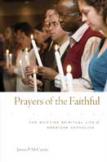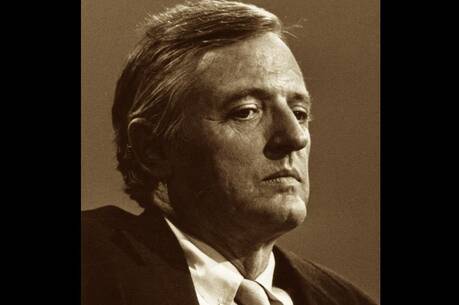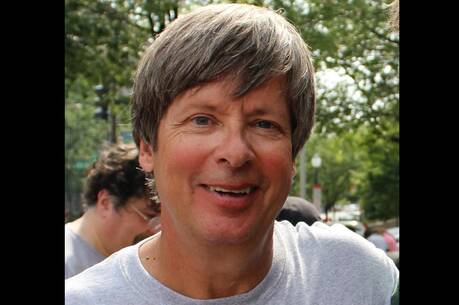Getting Personal
Any Catholic who came of age in the 1960s and 70s knows very well that the way Catholics prayed in those years was beginning to change. The celebration of the Mass was the most obvious example of this. By the end of the 1960s a new Mass in the vernacular had replaced the old-style Latin Mass. Accompanying the changes in the public worship of Catholics was the rapid decline of such popular devotions as the rosary, novenas, Forty Hours, First Friday Mass, Benediction and frequent private confession. To replace such rituals Catholics turned to a more personal encounter with God that was not dependent on the performance of prescribed rituals. This was a seismic shift in the prayer life of Catholics and one that James McCartin, an assistant professor of history at Seton Hall University, seeks to explain in his history of the spiritual life of American Catholics.
McCartin begins his history in the closing decades of the 19th century, when a distinctive style of spirituality dominated the Catholic landscape. Rather than explain how this spirituality shaped the mental world of people, he emphasizes how it shaped the Catholic community—unifying it across ethnic divides and strengthening Catholics against those who would attack their religion. An important point of this discussion is his development of the concept of the structure of spiritual authority. According to McCartin, this structure developed in the closing decades of the 19th century. But this is misleading. Such a devotional revolution occurred much earlier, in the 1840s and 50s, when the immigrant church was taking shape. The influx of thousands of immigrants transformed a plain style of piety prevalent in the late 18th and early 19th centuries into a religion centered around the performance of elaborate devotional rituals performed in church at ceremonies presided over by the priest, the chief figure in McCartin’s spiritual hierarchy.
All this changed in the 20th century, when Catholics moved beyond “the spiritual foundations established in the immigrant church” by adopting a more personal style of piety that enabled them “to bypass saints and spiritual authorities and go directly to God.” A key figure in this development was St. Thérèse of Lisieux, the Little Flower, and her spiritual classic, The Story of a Soul, which inspired thousands of Catholics. The liturgical movement, with its emphasis on the active participation of the laity in the liturgy and the frequent reception of Communion, also nourished this more personal, interior spirituality. Along with the emergence of what William James called “personal religion” was the recognition among Catholics that “prayer was integrally related to public life.”
According to McCartin, the Holy Cross priest Patrick Peyton promoted this relationship between prayer and a person’s public life through his Family Rosary Crusade. By popularizing the personal experience of prayer, he encouraged his followers to move beyond this style of prayer to what he described as “actions of faith and love which often speak louder than words.” It was this emphasis on the individual as an agent of change in the world that marked the significance of Peyton’s ministry. Since Peyton is the only person who merits an entire chapter in McCartin’s history, the author implies that the influence of this preacher in shaping the spiritual life of American Catholics was greater than any other religious figure in the 20th century. That is certainly questionable.
Far more convincing is McCartin’s analysis of the post-World War II period, when Catholics began to merge the sacred and secular as they sought to live out their faith in the secular realm. The author finds substantial evidence for this development in the Catholic communities of San Francisco and Boston. He also discusses the erosion of the spiritual authority of the hierarchy in the 1960s and 70s, a weakening that facilitated the strengthening of a spirituality centered in the person rather than the institution.
McCartin highlights the influence of the charismatic movement on the spirituality of Catholics. He also focuses on the realm of politics, where he argues that a “publicly oriented spirituality” inspired Catholics to become involved in efforts to bring about political and social change. Chief among his examples are the pro-life movement and the religiously inspired activism of Latino Catholics.
By tracing how Catholics have prayed over time McCartin has uncovered an important aspect of American Catholic history that most historians have overlooked. For centuries the personal experience of prayer has always nourished Catholics, but over the course of the 20th century American Catholics adopted a more publicly oriented spirituality, and this transformed their spiritual life. That is a very important development in the history of American Catholicism, and the author deserves credit for highlighting it.
This article also appeared in print, under the headline “Getting Personal,” in the April 26, 2010, issue.








